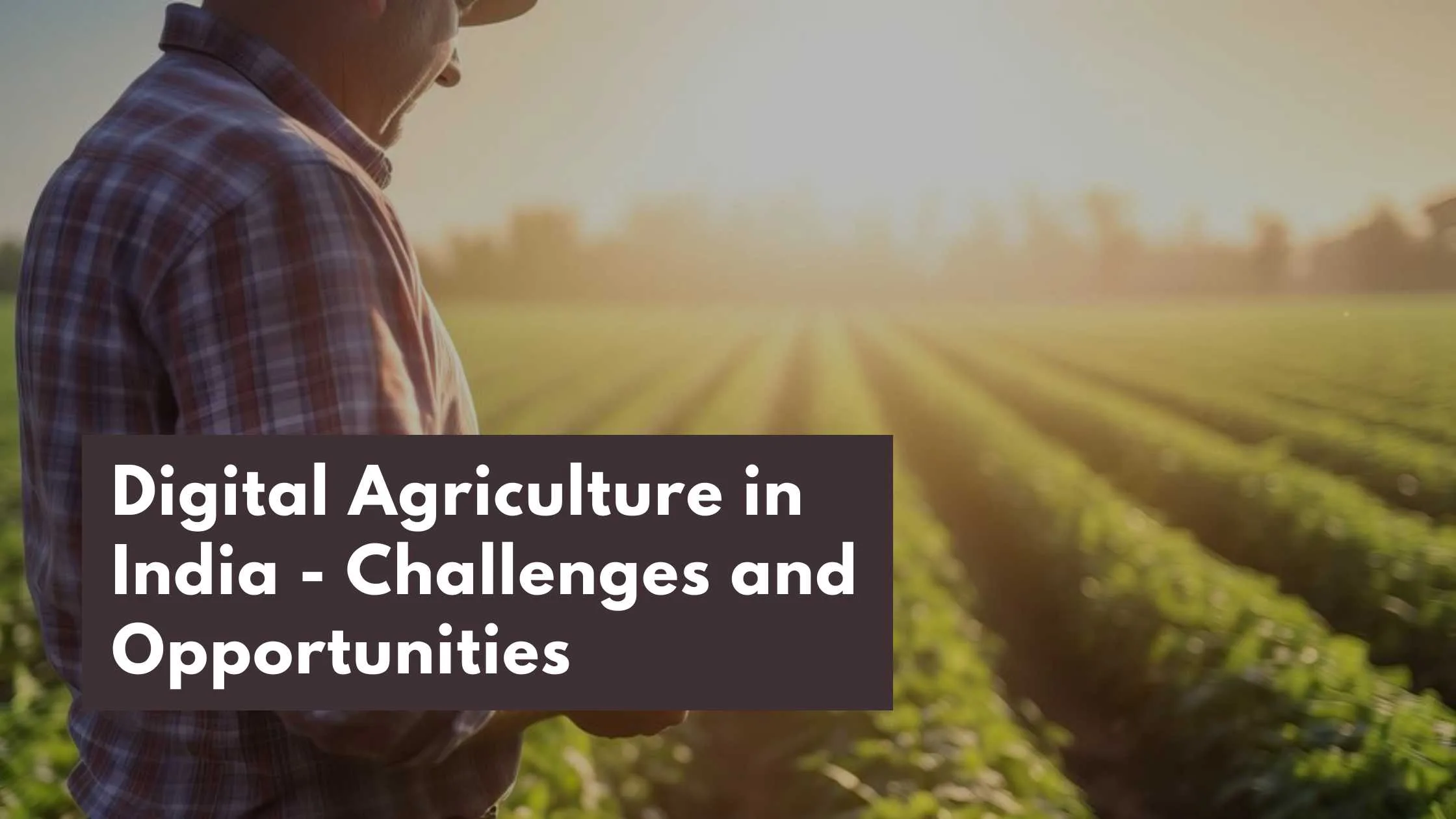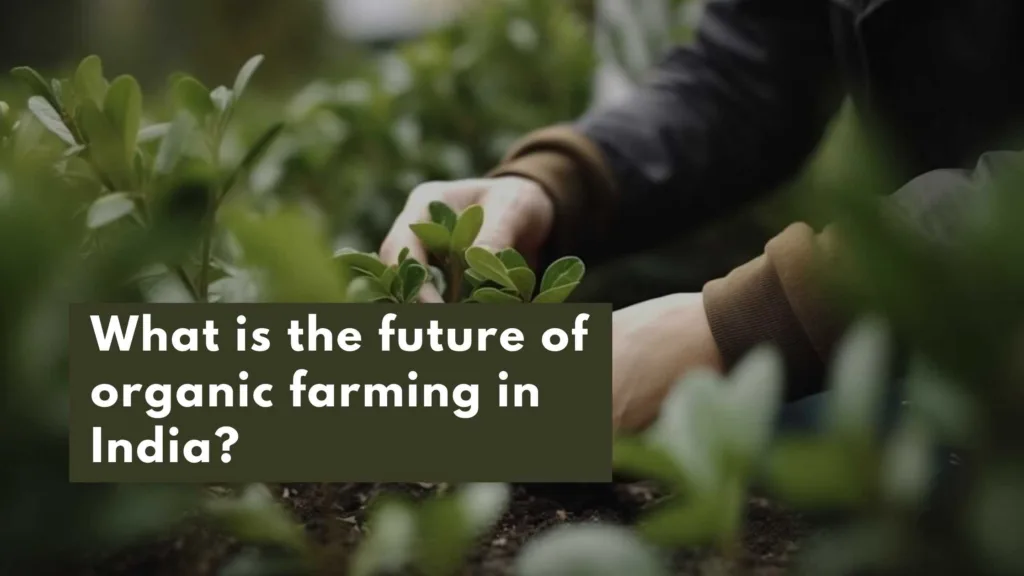Digital agriculture in India
Digital agriculture is the use of modern technologies and digital tools in agriculture to improve the efficiency and productivity of farming. Due to the growing accessibility of affordable digital technologies and the need to address issues facing the agriculture sector, digital agriculture has experienced significant growth in India in recent years.
Some of the key digital agriculture initiatives in India include:
- E-NAM (National Agriculture Market)
- Soil Health Cards
- Agri-tech Startups
- Digital Extension Services
- Precision Agriculture
Objectives of digital agriculture
The main objectives of digital agriculture are to improve the efficiency, productivity, and sustainability of agriculture. Digital agriculture uses various digital tools and technologies to achieve these objectives. Some of the specific objectives of digital agriculture include:
Increase agricultural productivity
Digital agriculture can help farmers increase their crop yields and improve the efficiency of their operations. For example, precision agriculture technologies can be used to optimize the use of fertilizers, pesticides, and water, resulting in higher yields and lower costs.
Improve food security
Digital agriculture can help ensure that there is enough food to meet the needs of a growing population. By providing farmers with information on weather, market prices, and agricultural practices, digital agriculture can help them make informed decisions and produce more food.
Reduce environmental impact
Digital agriculture can help reduce the environmental impact of agriculture by promoting sustainable practices. For example, precision agriculture technologies can help reduce the use of fertilizers and pesticides, which can reduce soil and water pollution.
Increase access to information
Digital agriculture can help bridge the information gap for farmers by providing them with access to the latest agricultural research, market information, and weather forecasts. This can help them make informed decisions and improve their agricultural practices.
Increase efficiency and profitability
Digital agriculture can help farmers reduce costs and increase their profits. For example, by using digital tools to monitor crop growth and health, farmers can identify problems early and take corrective action before it’s too late, which can result in higher yields and profits.
Overall, the objective of digital agriculture is to promote sustainable, efficient, and productive agriculture by leveraging digital technologies to address the challenges faced by farmers.
Why is digital agriculture in India important?
Digital agriculture is important in India for several reasons. First, agriculture is a critical sector of the Indian economy, employing more than half of the country’s workforce and contributing significantly to the country’s GDP. However, Indian agriculture faces several challenges, including low productivity, high input costs, and limited access to markets and information. Digital agriculture can help address these challenges by providing farmers with access to information, tools, and technologies that can improve their productivity and efficiency.
Second, India has a large rural population, with more than 60% of its population living in rural areas. Many of these rural communities depend on agriculture for their livelihoods. Digital agriculture can help improve the livelihoods of these communities by providing them with access to information, markets, and services that can help them improve their agricultural practices and increase their incomes.
Third, India has a significant digital divide, with many rural areas lacking access to digital technologies and infrastructure. However, digital agriculture can help bridge this divide by providing farmers with access to digital tools and technologies that can improve their agricultural practices. For example, mobile applications can be used to provide farmers with information on weather, market prices, and agricultural practices, even in areas without access to traditional digital infrastructure.
Finally, digital agriculture can help promote sustainable agriculture practices in India by reducing the environmental impact of agriculture. For example, precision agriculture technologies can be used to optimize the use of fertilizers, pesticides, and water, resulting in lower costs and reduced environmental impact.
Overall, digital agriculture is important in India because it has the potential to improve the efficiency, productivity, and sustainability of agriculture while also improving the livelihoods of rural communities and reducing the digital divide.
Benefits of digital agriculture in India
Digital agriculture offers several benefits in India, some of which are:
Improved agricultural productivity
Digital agriculture can help farmers improve their productivity by providing them with access to real-time information on weather, soil health, and crop growth. This information can be used to optimize the use of fertilizers, pesticides, and water, resulting in higher yields and lower costs.
Increased efficiency and profitability
Digital agriculture can help farmers reduce costs and increase their profits. For example, by using digital tools to monitor crop growth and health, farmers can identify problems early and take corrective action before it’s too late, resulting in higher yields and profits.
Reduced environmental impact
Digital agriculture can help reduce the environmental impact of agriculture by promoting sustainable practices. For example, precision agriculture technologies can help reduce the use of fertilizers and pesticides, which can reduce soil and water pollution.
Improved market access
Digital agriculture can help farmers improve their access to markets by providing them with information on market prices and connecting them with buyers and sellers through digital marketplaces.
Increased financial inclusion
Digital agriculture can help increase financial inclusion by providing farmers with access to digital financial services, such as mobile payments and digital loans, which can help them finance their agricultural operations and manage their finances more efficiently.
Improved rural livelihoods
Digital agriculture can help improve the livelihoods of rural communities by providing them with access to information, markets, and services that can help them improve their agricultural practices and increase their incomes.
Overall, the benefits of digital agriculture in India are significant, and the adoption of digital technologies in agriculture has the potential to transform the sector and improve the lives of millions of farmers and rural communities.
The future of digital agriculture in India
The future of digital agriculture in India is very promising, with the potential to significantly transform the sector and improve the lives of millions of farmers and rural communities. Some of the key trends and developments that are likely to shape the future of digital agriculture in India are:
Increased awareness and understanding of the advantages of digital technologies, as well as the need to address issues like low productivity and high input costs, are all contributing factors to the expected growth of the adoption of digital technologies in agriculture in India.
Increasing use of artificial intelligence and machine learning: The use of AI and machine learning is expected to become more widespread in agriculture in India, enabling farmers to make more informed decisions about when to plant, fertilize, and harvest crops and helping them to identify and address potential problems such as crop diseases or pests.
Expansion of digital marketplaces: The expansion of digital marketplaces is expected to continue in India, providing farmers with greater access to markets and helping to reduce transaction costs.
Greater focus on sustainability
There is likely to be a greater focus on sustainability in agriculture in India, with digital technologies playing an important role in promoting sustainable practices such as precision agriculture, which can help reduce the use of fertilizers and pesticides and minimize the environmental impact of agriculture.
Increased emphasis on data analytics
Data analytics is expected to become increasingly important in agriculture in India, enabling farmers to collect and analyze data on soil health, weather, and other factors that affect crop yields and use this information to optimize their agricultural practices.
Overall, the future of digital agriculture in India is very bright, with digital technologies expected to play an increasingly important role in improving the efficiency, productivity, and sustainability of agriculture, while also improving the lives of millions of farmers and rural communities.
Opportunities in digital agriculture
Digital agriculture presents several opportunities for various stakeholders in India, such as:
Farmers
Digital agriculture provides farmers with access to real-time information on weather, soil health, and crop growth, enabling them to make more informed decisions about when to plant, fertilize, and harvest crops. Digital technologies can also help farmers reduce input costs, increase yields, and improve their profitability.
Agribusinesses
Digital agriculture provides agribusinesses with access to a wealth of data on crop yields, market trends, and consumer preferences, enabling them to develop more targeted marketing strategies and improve their supply chain management. Digital technologies can also help agribusinesses reduce costs, increase efficiency, and improve their profitability.
Government
Digital agriculture provides the government with a platform to disseminate information to farmers, monitor and evaluate agricultural programs, and promote sustainable agriculture practices. Digital technologies can also help the government improve its capacity to respond to crises such as natural disasters or pandemics.
Technology companies
Digital agriculture provides technology companies with a huge market opportunity, as the adoption of digital technologies in agriculture continues to grow in India. Technology companies can develop and market a wide range of digital solutions to farmers, agribusinesses, and government agencies.
Investors
Digital agriculture presents investors with a significant opportunity to invest in a rapidly growing and potentially transformative sector. Investments in digital agriculture can help support the development of innovative digital solutions, as well as the expansion of digital infrastructure and the adoption of digital technologies by farmers and agribusinesses.
Overall, digital agriculture presents several opportunities in India, and stakeholders across the agriculture sector can benefit from the adoption of digital technologies in agriculture.
Challenges of digital agriculture
While digital agriculture presents several opportunities, several challenges must be addressed to fully realize the potential of digital technologies in agriculture in India. Some of the key challenges include:
Limited digital infrastructure
One of the biggest challenges facing digital agriculture in India is the limited availability of digital infrastructure, such as internet connectivity and mobile networks, particularly in rural areas where the majority of farmers are located. Without adequate digital infrastructure, farmers cannot access digital tools and services, limiting the impact of digital agriculture.
Low digital literacy
Another challenge is low levels of digital literacy among farmers, particularly older farmers who may be less familiar with digital technologies. This can limit the adoption of digital tools and services and make it difficult for farmers to fully benefit from digital agriculture.
The high cost of digital technologies
Digital technologies can be expensive, and the high cost of digital tools and services can be a barrier to adoption for many farmers, particularly smallholder farmers who may have limited financial resources.
Lack of relevant and localized content
The lack of relevant and localized digital content is another challenge, particularly concerning information on crops, weather, and markets. Information that is not relevant to local conditions or not available in local languages may be of limited use to farmers.
Privacy and security concerns
As digital agriculture relies on the collection and storage of large amounts of data, there are concerns about the privacy and security of this data. Without adequate safeguards, farmers and other stakeholders may be reluctant to share sensitive information, limiting the potential of digital agriculture.
Limited coordination among stakeholders
Finally, limited coordination among stakeholders can be a barrier to the adoption and scaling of digital technologies in agriculture. Collaboration among farmers, agribusinesses, government agencies, and technology companies is essential to ensuring that digital agriculture is effective, sustainable, and inclusive.
Overall, addressing these challenges will be critical to realizing the full potential of digital agriculture in India and ensuring that it benefits farmers and rural communities across the country.
Conclusion
In conclusion, digital agriculture has the potential to transform the agricultural sector in India by improving productivity, reducing costs, and increasing profitability for farmers and other stakeholders. By leveraging digital technologies such as mobile applications, sensors, and drones, farmers can access real-time information on weather, soil health, and crop growth, enabling them to make more informed decisions and adopt more sustainable practices.
Additionally, digital agriculture can help improve supply chain management, reduce food waste, and promote more efficient resource use across the agriculture sector.
However, to fully realize the potential of digital agriculture in India, several challenges must be addressed, such as limited digital infrastructure, low levels of digital literacy, and high costs of digital technologies. Stakeholders across the agriculture sector must work together to ensure that digital agriculture is inclusive, sustainable, and effective, and that it benefits farmers and rural communities across the country.
Overall, the adoption of digital technologies in agriculture represents an exciting opportunity for India to modernize its agriculture sector, enhance food security, and support sustainable economic growth.



